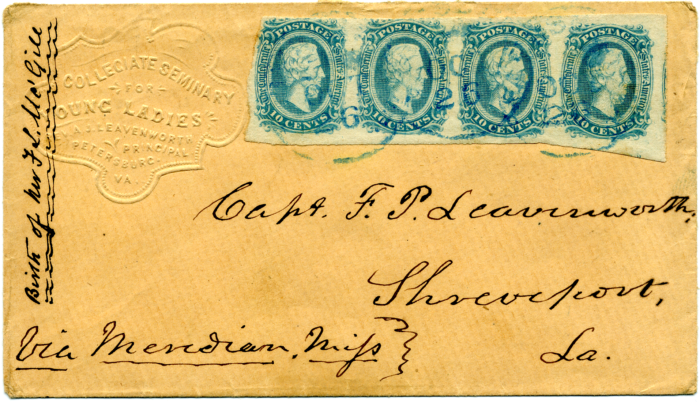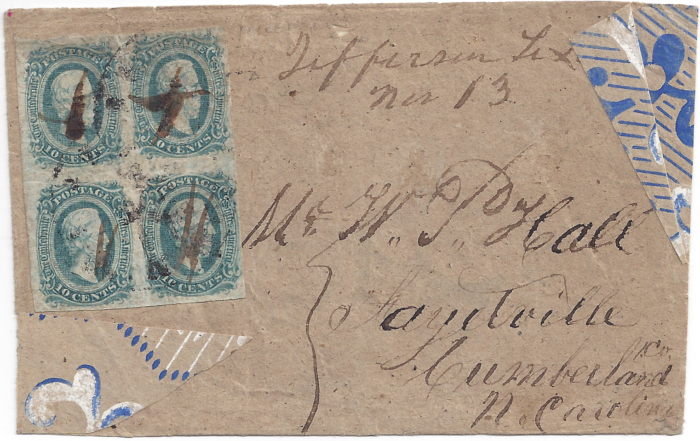Union victories at New Orleans and Memphis in April and June 1862 effectively closed the Mississippi River to normal Confederate commerce. It also caused a major disruption of the Confederate mails across the river.
The first effort to establish a speedy mail service across the Mississippi River was the Confederate Congressional Act of October 6, 1862. This Act authorized the postmaster general to employ special agents to “secure the speedy and certain transportation of mails across the Mississippi River.” This Act did not result in the desired improvement in service and the next year two new mail services were authorized: Preferred Mail and the Trans-Mississippi Express Mail.
Preferred Mail. The Act of April 16, 1863 authorized the Postmaster General “to establish a mail route for the more speedy transmission of letters and dispatches, only, between the States lying east and those lying west of the Mississippi River.” The rate of postage was set at fifty cents per half-ounce or fraction thereof. The name “preferred mail” comes from the title of the Act that authorized it, “An Act to establish a preferred mail across the Mississippi River.”
There is no evidence Postmaster General John Reagan used this authorization to establish a preferred mail service. Post Office records indicate all his efforts were focused on establishing a Trans-Mississippi Express mail that was authorized two weeks later. Several Trans-Mississippi covers exist that bear 50¢ in postage. There is no evidence these were carried as “Preferred Mail.” Some of the covers bear the same routing notations as found on Trans-Mississippi Express mail indicating they were carried as Trans-Mississippi Express Mail. One explanation for the covers bearing 50¢ in postage is a purported newspaper notice about the Trans-Mississippi Express Mail that erroneously stated the rate was 50¢.
Trans-Mississippi Express Mail. The Act of May 1, 1863, authorized the postmaster general “to establish express mails for the conveyance of letters and government dispatches only.” The Act set a maximum rate of $1.00 per half-ounce or fraction thereof for any distance not exceeding 500 miles and double the rate for distances over 500 miles. The postmaster general set the rate at 40¢ per half-ounce or fraction thereof and ignored the two-tier distance rate structure authorized by the legislation. There is no effective date for the Trans-Mississippi Express Mail as it was left to the postmaster general to establish the service.


A census and further description of these services are described in detail by Richard Krieger in his 1984 monograph, The Trans-Mississippi Mails after the Fall of Vicksburg.
